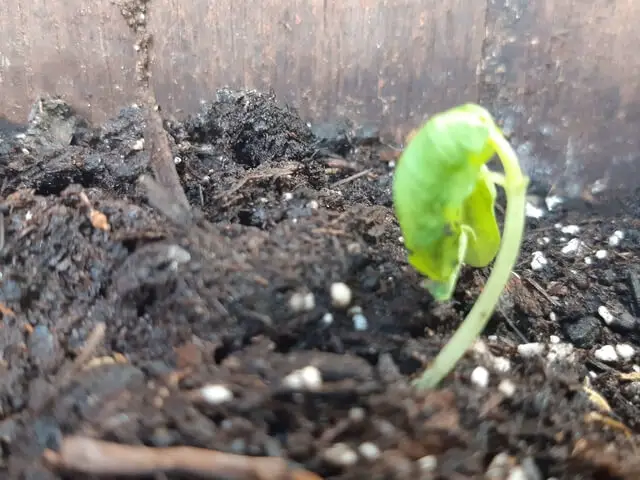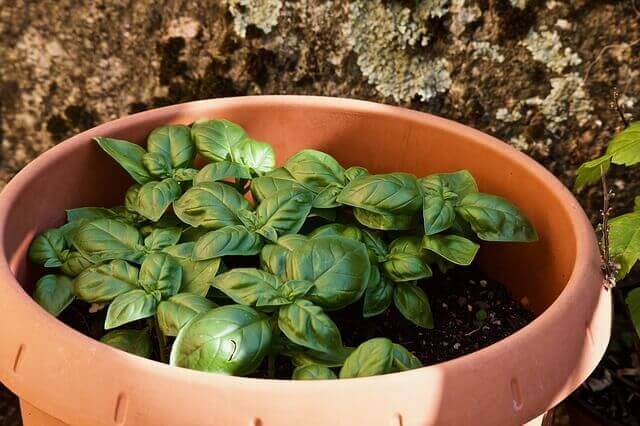Caring for Basil Plants Outdoors: Essential Tips For Planting Basil Outside

Basil plants is a very desired herb to grow during the summer in the home garden. In a garden, basil is an essential herb. It’s aromatic and has many culinary uses. The plant produces leaves that are great for fresh salads or pesto sauce! It tastes great on almost any dish you could think of!
The benefits of growing outdoors is that basil grows quicker, and easier with more sunlight than it does indoors. Basil also thrives on cooler nights and there is less chance for fungus or mold when grown outside, which may be due to higher levels of oxygen and lower humidity levels.
Basil grows the best outdoors, so it can take advantage of all that natural sunlight. If you want to grow basil at home but don’t have an outdoor space for it, you should consider getting some small pots or even just one pot.
Basil is easy to grow and require only a little sunlight, water, and fertilizer to produce an abundance of basil leaves for your culinary needs. In this article we will talk about how you can best care for your basil plant outdoors or in a container.
Table of Contents
How to start your seedlings indoor?
- The seedlings of these plants can be started indoors in peat pots or 5 gallon buckets. If you are new to gardening, there are a few key steps to take before planting your basil plants.
- Ensure that the potting soil is well-draining and moist. – Mix in some sand or perlite for drainage purposes.
- Plant seeds approximately 1/4 inch deep and keep evenly spaced with about 2 inches between each plant to ensure proper growth.
- Cover the planted seeds with an additional layer of potting soil and water thoroughly until dampened throughout the surface area. Start seeds indoors six weeks before last frost date or purchase starter plants from garden center.
- Keep temperature around 75 degrees Fahrenheit -90 degrees Fahrenheit for seedlings to grow. The seedlings grow to a height of around 12 inches in 5-6 weeks. Once the seedlings have grown to their full height, they’re ready to move outside.

How to plant Basil plants outside?
To get the most out of your basil plants and enjoy them throughout the year, you need to follow these three simple steps to maintain basil outdoors.
#1 – Preparing for planting: These steps will help ensure the proper germination of your basil plants.
#2 – Preparing the planting container: You need to prepare your container before you can plant your basil. Choose a nice container with drainage holes, one that is sized appropriately for the amount of basil you plan on planting.
#3 – Preparing the planting soil: Your soil needs to be well-drained, and preferably enriched with compost, manure, or other organic matter.

How to grow Basil plants outside?
Basil grows well in full sun, but even in semi-shade is very low maintenance if kept watered. Also don’t worry about adding fertilizer to your growing mix.
Basil plants thrive in small spaces, and can be grown in pots and containers if your limited on space, so its perfect for balconies and patios.

How to care for Basil plants outside?
Basil is fairly drought tolerant, so there is no need for much watering. But there are certain guidelines you need to follow for how to maintain your basil plants in such a way that they remain green all year round, even if there is little rain.
Basil needs direct sun to grow really well, and also loves moist soil, so watering every couple of days is a good idea. Fertilizing your basil with the correct amount of fertilizer, in time, will also help to improve the plant’s health and flower production.
What happens when the plant flowers?
Pinching off the flower buds as soon as they spring up will help to stimulate growth of the remaining leaves. The reason for this is that if you let the flowers mature, they will use up a lot of energy and leave less energy for other growth processes.
If you want your basil plant to produce more leaves, then pinch back the flowers as soon as they sprout. You can also pinch back individual branches in order to encourage branching out or cut off any excess foliage at the nodes.
How to harvest Basil plants outside
There are a few easy ways to harvest basil at the end of the season, without having to cut the plants back heavily. Look for the youngest leaves on the basil plant as these are the most tender and should be the first to be harvested. Place the leaves in a kitchen towel and squeeze the excess moisture.
This ensures that you get as much moisture as possible and leaves you with the highest quality basil leaves for cooking. The amount of basil that you can use will vary from one application to the other, so make sure to read the instructions on how much basil you should use for your recipes.
For best results, trim the stems of the basil leaves so that they will be easier to work with. If you trim the stems too close to the stem, you may end up with excess basil leaves. If that happens, you can store them in a plastic container.
Conclusion
Growing basil in your home garden can be an interesting, fascinating experience for the whole family. Growing basil is relatively easy, and your herbs will provide you with wonderful basil dishes for years to come.
Frequently Asked Questions
Is Basil still good after it flowers?
Many people wonder if basil is still good after it flowers. The answer to this question is yes, but the taste usually gets more bitter. When basil plants flower, they are most likely done producing leaves for that season and so there will be no new growths or plantings.
Basil flowers can have a sweet scent like cloves or mint which makes them attractive as well as an ornamental plant in some areas of the world.
What does it mean if basil flowers?
Basil flowers are one of the first signs that a basil plant is shutting down and going into Asexual reproduction. If you have been growing your basil in order to harvest it, this may be frustrating. However, if you were growing it for its leaves or seeds, then this process can actually be helpful.
Some gardeners will cut off their flowering stems before they go into seed production to prevent having too many new plants in their garden space.
Does basil come back year after year?
Basil is a leafy herb that usually doesn’t grow back yearly. But if you take care of it and give it extra care, basil can possibly come back year after year.








